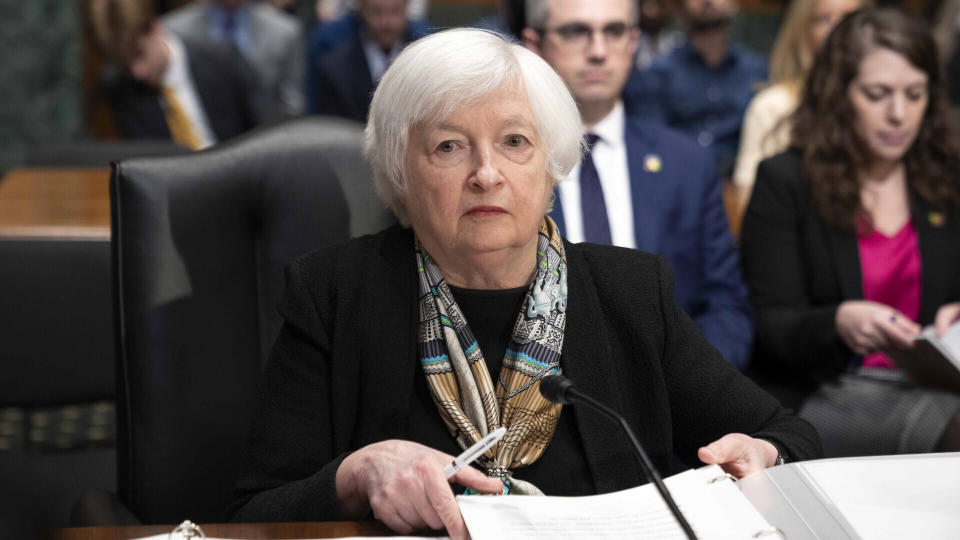New $2 Trillion Fund for Banks Will Protect Your Money, Too

Following the collapses of Silicon Valley Bank and Signature Bank and the ensuing market turmoil it created, the government took several emergency measures. One of which, announced on March 12, is the additional funding that is being made available through the creation of a new Bank Term Funding Program (BTFP), which is designed to help banks meet the needs of all of their depositors.
Learn: What Happens to Your Money If Your Bank Fails?
Discover: How to Guard Your Wealth From a Potential Banking Crisis With Gold
How does BTFP work?
The BTFP was created to support American businesses and households by making additional funding available to eligible depository institutions to help assure banks have the ability to meet the needs of all their depositors, according to a Federal Reserve statement.
In other words, the program was created to avoid a bank run, and in turn, potentially catastrophic consequences for the economy and consumers. It also helps restore a sense of confidence in the banking system and aims at quelling jittery investors’ and depositors’ fears of contagion.
“A key element of the program is that if an eligible financial institution needs to raise capital quickly (in the event of a bank run, for example) it won’t need to sell its discounted debt,” said Lawrence Gillum, Fixed Income Strategist for LPL Financial. “It can use existing bonds that are trading at discounts to par as collateral and receive new securities that are trading at par. This will allow banks to fund potential deposit outflows without realizing losses on depreciated securities, which would likely prevent another SVB type scenario from happening again.”
Any U.S. federally insured depository institution — including a bank, savings association, or credit union — or U.S. branch or agency of a foreign bank that is eligible for primary credit under the Federal Reserve discount window is eligible to borrow under the BTFP, according to a fact sheet.
It offers loans of up to these eligible entities pledging U.S. Treasuries, agency debt and mortgage-backed securities, and other qualifying assets as collateral. These assets will be valued at par.
“The BTFP will be an additional source of liquidity against high-quality securities, eliminating an institution’s need to quickly sell those securities in times of stress,” the Fed said in a press release.
In addition, the Department of the Treasury will make available up to $25 billion from the Exchange Stabilization Fund (ESF) as a backstop for the BTFP.
As of March 16, banks had borrowed $11.9 billion from the program, which began operations March 13, according to Fed data.
In addition, the data shows that banks borrowed $152.8 billion during the week of March 15 from the Fed’s so-called “discount window.” The Washington Post reports that this is up from $4.58 billion the week before and the previous record was $111 billion, a mark reached during the 2008 financial crisis.
What does it mean for Americans?
Treasury Secretary Janet Yellen said in a speech at the American Bankers Association on March 21, that the government’s emergency measures underscore the importance of a dynamic and diverse banking system, which is critical to the American economy.
Yellen re-emphasized the important role small- and mid-sized banks play in the economy, according to her remarks.
“These banks are heavily engaged in traditional banking services that provide vital credit and financial support to families and small businesses. They also increase competition in the banking sector, and often have specialized knowledge and expertise in the communities they invest in,” Yellen added.
With little liquidity, banks would have to limit their lending to consumers, which in turn could tip the economy into a recession and prove difficult for businesses and consumers alike.
As Yellen added in her speech, American households depend on banks to finance their homes, invest in an education, as well as improve their standards of living. Meanwhile, businesses borrow from these institutions to start new companies and expand existing ones.
Take Our Poll: Are You Concerned About the Safety of Your Money in Your Bank Accounts?
What does it mean for the near-term future?
The measures have somehow assuaged investors and following Yellen’s speech on March 21, regional bank stocks bounced back.
However, while she noted that the government has taken the necessary steps to ensure that depositors’ savings and the banking system remain safe, she added that it is remaining vigilant.
“The steps we took were not focused on aiding specific banks or classes of banks. Our intervention was necessary to protect the broader U.S. banking system,” Yellen said. “And similar actions could be warranted if smaller institutions suffer deposit runs that pose the risk of contagion.”
More From GOBankingRates
This article originally appeared on GOBankingRates.com: New $2 Trillion Fund for Banks Will Protect Your Money, Too
